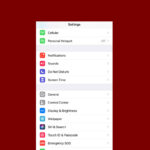Uninstalling a program and deleting it are not the same process. Uninstalling removes the program completely from your system, including associated files and registry entries, while deleting only removes the main program folder.
When you delete a program by simply removing its folder, you leave behind remnants in the system registry and other locations on your computer. These leftover files can take up space and potentially cause conflicts with other software.
Proper uninstallation uses built-in tools to remove all traces of the program. This process reverses the changes made during installation, ensuring a clean removal. For most applications, using the uninstall function is the best way to completely remove the software from your system.
Uninstalling vs. Deleting: What’s the Difference?
While the terms “uninstalling” and “deleting” are often used interchangeably, they are not exactly the same when it comes to software. Here’s a breakdown:
Deleting a Program
Deleting usually refers to simply removing the program’s files from your computer. You might drag the program’s folder to the Recycle Bin or use the “Delete” key. This removes the program’s executable files, but it often leaves behind other components.
Uninstalling a Program
Uninstalling a program is a more thorough process. It involves using the program’s built-in uninstaller or the operating system’s uninstallation tool. This process not only removes the program’s files but also:
- Deletes associated files: This includes configuration files, temporary files, and other data created by the program.
- Removes registry entries: Many programs make changes to the system registry, and uninstalling properly removes these entries.
- Reverses system changes: Some programs might install drivers or make other system changes, which are reversed during uninstallation.
Why Uninstalling is Usually Better
Simply deleting a program can leave behind remnants that clutter your hard drive, take up space, and potentially cause conflicts with other software. Uninstalling ensures a cleaner removal and helps keep your system running smoothly.
When Deleting Might Be Okay
In some cases, deleting a program might be sufficient:
- Portable programs: These programs don’t require installation and can usually be deleted without leaving behind any traces.
- Simple programs: Very basic programs with minimal system integration might also be safely deleted.
However, it’s generally recommended to uninstall programs using the proper methods whenever possible.
How to Uninstall a Program
The uninstallation process varies depending on your operating system:
- Windows: You can uninstall programs through the Control Panel or the Settings app.
- macOS: You can usually uninstall programs by dragging their app bundle to the Trash. Some programs might have dedicated uninstallers within their app folders.
Always refer to the program’s documentation or website for specific uninstallation instructions.
| Action | Description | Potential Issues |
|---|---|---|
| Deleting | Removing program files manually | Leftover files, registry entries, system changes |
| Uninstalling | Using the program’s uninstaller or system tool | More thorough removal, cleaner system |
Uninstalling Apps on Mobile Devices
Mobile operating systems like Android and iOS handle app removal differently than traditional computers.
Android
There are two main ways to uninstall apps on Android:
- Through the app drawer:
- Open the app drawer (the list of all your apps).
- Tap and hold the app you want to uninstall.
- Drag the app to the “Uninstall” option at the top of the screen.
- Confirm the uninstallation.
- Through the Settings app:
- Open the Settings app.
- Go to “Apps” or “Applications.”
- Find the app you want to uninstall in the list.
- Tap on the app and select “Uninstall.”
- Confirm the uninstallation.
Uninstalling an app on Android removes the app and its associated data, similar to uninstalling a program on a computer.
iOS (iPhone/iPad)
To uninstall an app on an iOS device:
- Tap and hold the app icon on the home screen.
- Select “Remove App.”
- Choose either “Delete App” or “Remove from Home Screen.”
“Delete App” completely removes the app and its data from your device. “Remove from Home Screen” only removes the app icon from your home screen but keeps the app and its data on your device. This can be useful for apps you rarely use but don’t want to delete entirely.
Deleting vs. Uninstalling Apps on Mobile
Similar to computers, “deleting” an app on a mobile device might imply simply removing the app’s icon from the home screen (like “Remove from Home Screen” on iOS). However, this doesn’t fully uninstall the app. To completely remove the app and its data, you need to use the proper uninstallation method for your operating system.
Does uninstalling a program remove everything?
Uninstalling a program is designed to be a thorough removal process, but it doesn’t always remove everything. Ideally, it will delete the program’s main files, related data, registry entries, and any system changes made during installation. However, some programs might leave behind leftover files or folders, especially if they’re poorly designed or have complex installations.
Is deleting a file the same as uninstalling?
No, deleting a file is not the same as uninstalling a program. Deleting a file simply removes that specific file from your system. Uninstalling a program, on the other hand, is a more comprehensive process that aims to remove all components associated with the program.
What does it mean to uninstall a program?
Uninstalling a program means using the software’s built-in uninstaller or your operating system’s tools to remove the program from your computer. This process goes beyond simply deleting the program’s files and attempts to erase its presence from your system as completely as possible.
Should I uninstall or delete?
In almost all cases, you should uninstall programs rather than simply deleting them. Uninstalling provides a cleaner and more complete removal, reducing the risk of leftover files causing clutter or conflicts with other software.
How do I fully delete an app?
To fully delete an app, you should always use the proper uninstallation method provided by your operating system. This ensures that the app and its associated data are removed as thoroughly as possible. Simply deleting the app’s shortcut or icon won’t fully remove it. If you’re concerned about leftover files, you can use a third-party cleaning tool to scan for and remove any remaining traces.
Key Takeaways
- Uninstalling removes all program components while deleting only removes visible files
- Proper uninstallation helps maintain system stability and frees up space
- Use built-in uninstall tools for complete program removal
Understanding Uninstallation Processes
Uninstalling programs involves more than simply deleting files. It’s a process that removes software components and related data from a computer system.
Differences Between Uninstalling and Deleting
Uninstalling a program is not the same as deleting it. When you delete a program, you only remove the main executable file. This leaves behind other files, settings, and registry entries.
Uninstalling uses a dedicated process to remove all program components. This includes files in various locations, registry keys, and settings. The uninstaller also cleans up shortcuts and file associations.
Proper uninstallation helps maintain system health. It frees up disk space and prevents conflicts with other software. Using the Control Panel or Settings app to uninstall ensures a thorough removal.
Components of a Program Install
When software is installed, it adds several elements to a computer system. These include:
- Executable files
- Supporting libraries (DLLs)
- Configuration files
- User data
- Registry entries
- Shortcuts
The installer places these components in different locations. Some go in the Program Files folder. Others are stored in user-specific directories or system folders.
Windows Registry entries contain important information about the program. These entries tell the system how to run the software and manage its settings.
Uninstalling through official methods ensures all these components are properly removed. This helps keep the system clean and efficient.
Methods of Uninstalling Programs
Windows offers several ways to remove unwanted software from your system. These methods range from built-in tools to advanced techniques for more thorough removal.
Using Control Panel and Settings App
The Control Panel and Settings app provide easy ways to uninstall programs on Windows 10. To use the Control Panel, open it and select “Uninstall a program” under Programs. This displays a list of installed software. Right-click the program you want to remove and choose “Uninstall.”
The Settings app offers a similar process. Click Start, open Settings, and go to Apps > Apps & features. Find the app to uninstall, click on it, and select “Uninstall.”
For apps downloaded from the Microsoft Store, use the Start menu. Right-click the app tile or icon and select “Uninstall.” This removes the app quickly and cleanly.
Advanced Techniques with PowerShell
PowerShell offers more control over program removal. To uninstall software using PowerShell:
- Open PowerShell as administrator
- Use the command: Get-AppxPackage program_name | Remove-AppxPackage
This method works well for removing built-in Windows apps and other software that resist standard uninstall procedures.
PowerShell can also remove programs by their product code:
- Find the product code in the registry
- Use: msiexec /x {ProductCode} /qn
This silent uninstall bypasses user prompts and removes the software completely.
Native Uninstallers and Microsoft Store
Many programs come with their own uninstall.exe files. These are often the best choice for thorough removal. Find the program’s folder in the Start menu or File Explorer and look for “uninstall” or a similar option.
For Microsoft Store apps, the store manages installations and removals. Open the Microsoft Store, click the three dots next to your account icon, and select “My Library.” Find the app to uninstall and click “Uninstall.”
Native uninstallers and the Microsoft Store method ensure proper removal of all components, including registry entries and supporting files.
Frequently Asked Questions
Uninstalling and deleting programs can have different effects on various devices and operating systems. These questions address common concerns about removing software across Windows, Android, and iOS platforms.
What is the difference between uninstalling and deleting a program on Windows?
Uninstalling a program on Windows removes it completely from the system. This process eliminates the program files, registry entries, and associated data. Deleting only removes the visible files without addressing registry entries or hidden components.
Does removing an app on Android achieve the same result as uninstalling it?
Removing an app on Android is typically the same as uninstalling it. This action removes the app from the device and frees up storage space. Some system apps may only be disabled rather than fully uninstalled.
How does uninstalling an application on iPhone differ from simply deleting it?
On iPhones, uninstalling and deleting an app are the same process. Tapping and holding an app icon until it wiggles, then tapping the ‘X’ removes the app and its data from the device. This action frees up storage space and removes app permissions.
Is there a distinction between the ‘remove’ and ‘uninstall’ options on Android devices?
On most Android devices, ‘remove’ and ‘uninstall’ have the same meaning. Both options delete the app and its data from the device. Some manufacturers may use these terms interchangeably in their user interface.
When you uninstall a program on Windows, are all associated files removed as well?
Uninstalling a program on Windows removes most associated files. However, some leftover files or folders may remain. These can include user-created documents or configuration files in personal folders.
What are the potential consequences of deleting a program instead of properly uninstalling it?
Deleting a program without uninstalling it can leave remnants in the system. This may cause registry clutter, take up unnecessary disk space, or lead to error messages. Proper uninstallation helps maintain system health and performance.





